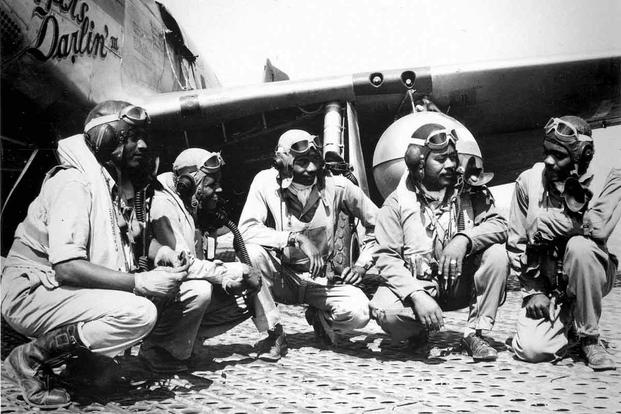I recently watched the movie "Red Tails" about the Tuskegee Airmen's triumph over racism, poor equipment and underutilization during the air war over the European Theater of Operations (ETO) during World War II. I really came away impressed not just with the character, performance and professionalism of the Tuskegee Airmen, but also of the high number of transferable military-to-business skill sets the movie offers.
This movie was a great example of direct examples of combat aviation skills and how well they can and do work in business. Below are a few of the more relevant business lessons that the movie offers.
Business Lesson No. 1: Communicate with Your Team
The pilot cross-talk during both fighter operations and the bomber protection missions was a great lesson in the importance of team communications. Before the battle, the pilots communicated to maintain morale and pass important lessons to ensure success in the air.
Once the battle was joined, the pilots communicated their positions, plans and if they needed or could offer help. This is a great lesson for customer-facing organizations to communicate in the heat of operations and serve customers by showing how they are doing, how the plan is progressing or whether they can offer to help.
Business Lesson No. 2: Pride + Professionalism + Performance
Direct and indirect racism against the Tuskegee Airmen was a constant companion. The Tuskegee Airmen did not fight back physically, instead letting the combination of pride in their unit, the professionalism of their conduct as Army Air Corps soldiers and their high performance as aviators be the judge.
This is great advice never to stoop to the level of your detractors and critics, but to rise above the "flak" or negativity with a positive attitude and unparalleled professionalism, and produce great results for your customers.
Business Lesson No. 3: Know How to Define and Measure Your Success
In my favorite scene from "Red Tails," Col. A.J. Bullard (Terrence Howard) responds to calls of disagreement from the pilots that they will remain with the heavy bomber groups and not pursue the attacking German fighter aircraft. Bullard: "We will measure our success by the husbands we return to their wives, the fathers we return to their children. For every bomber we save, we will save the lives of 10 crewmen."
This directly told the entire unit how they would be successful from now on -- not by shooting down planes, but by ensuring the heavy bombers returned to their bases in England. Organizations at the bottom level need to fully understand, know and agree how they measure their success in the simplest terms possible.
Business Lesson No. 4: Know What Your Customers Want
For the Tuskegee Airmen, their customers were the leadership of the European Bomber Command that was trapped in a battle where they were losing more bombers and aircrew to German fighters. In a small but moving scene, Col. Bullard sat with Lt. Gen. Luntz (played by Gerald McRaney) and reviewed gun camera film to determine precisely what Luntz wanted and how the Red Tails could help. This was a classic "sales meeting" set up to determine customer needs and requirements and how the service provider could help.
Business Lesson No. 5: Celebrate Your Successes and Learn with the Entire Team
The Tuskegee Airmen used gun camera footage to help their entire unit celebrate aerial victories and to educate new pilots and ground crew on the vital importance of everyone's mission. In air operations, it takes mechanics, planners, fuelers, weaponeers, weather people and more to make a successful combat flight. The Tuskegee Airmen highlighted victories and the importance of what the support personnel did.
Furthermore, the gun camera footage acted as both an after-action review (AAR) that highlighted:
- What happened?
- What went well?
- What did not go well?
- What can they do to fix it?
Finally, the footage served as a final point of education to show new pilots enemy tactics and what works to win. The use of team celebrations and AAR's convince the entire organization of what success is and how to improve.
The Next Step: Get Veteran Jobs Tips
Looking for transition and veteran jobs tips? Military.com has you covered. Sign up for a free Military.com membership to have military news, updates and job resources delivered directly to your inbox.











